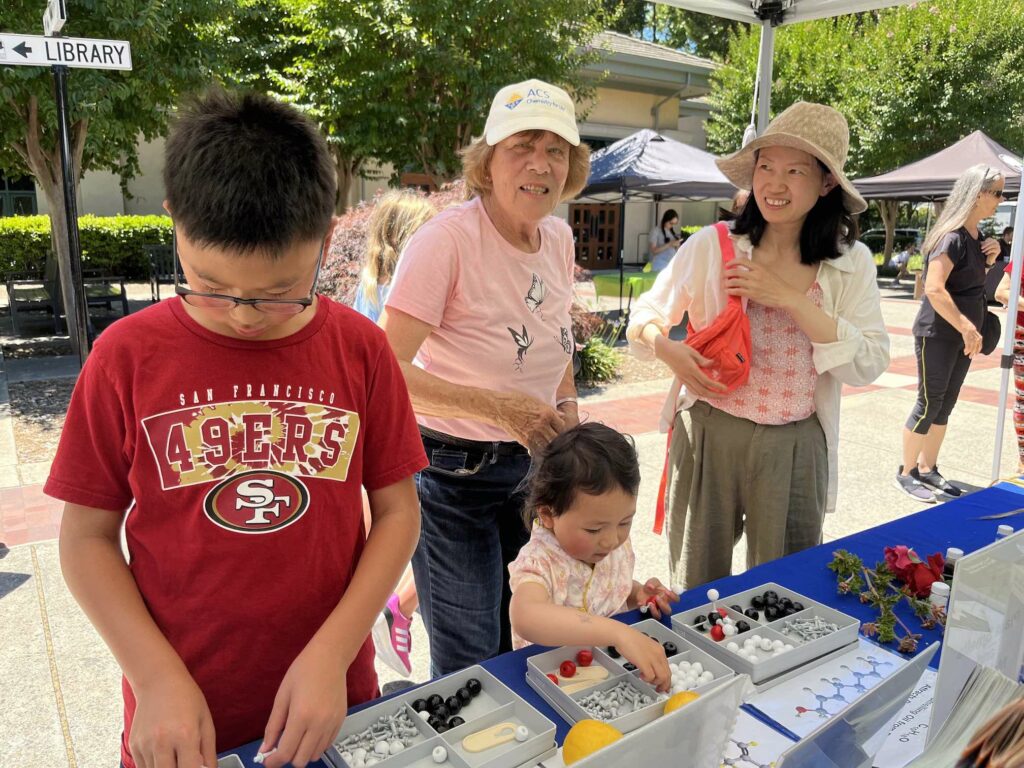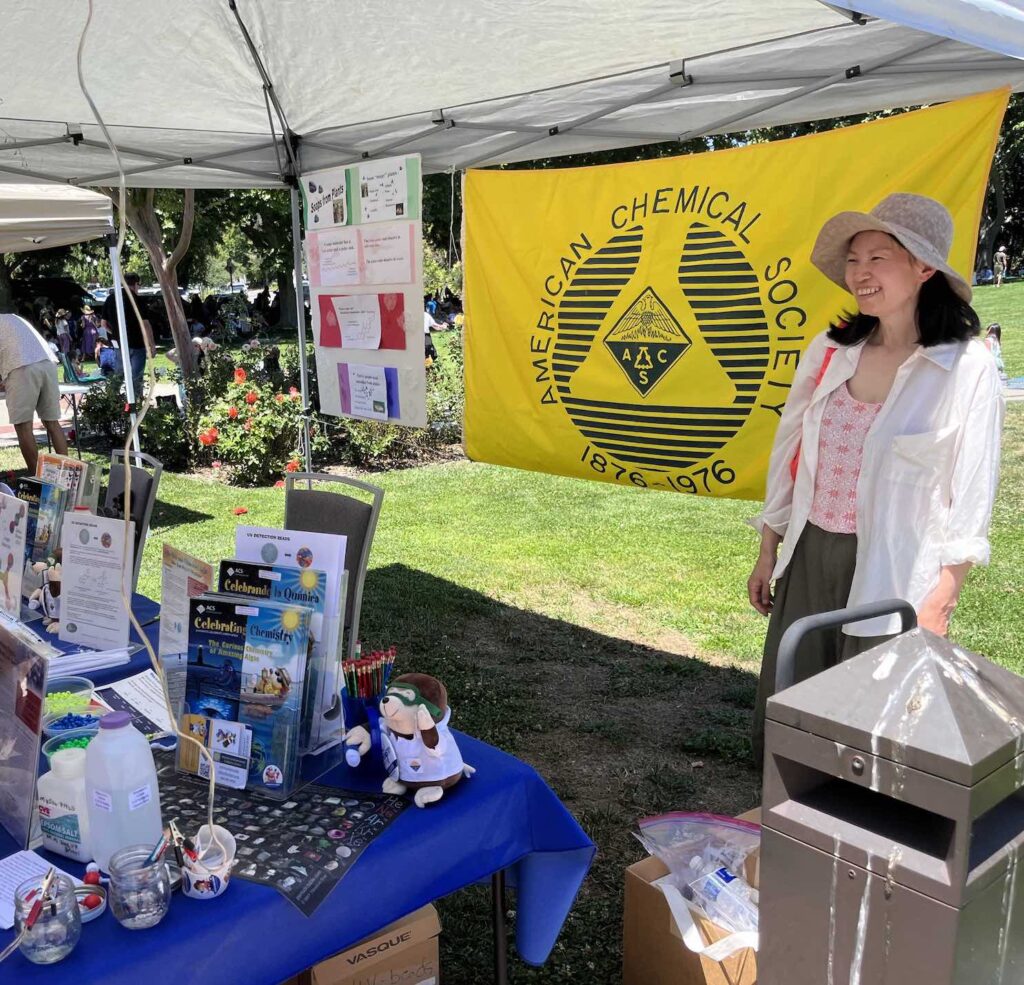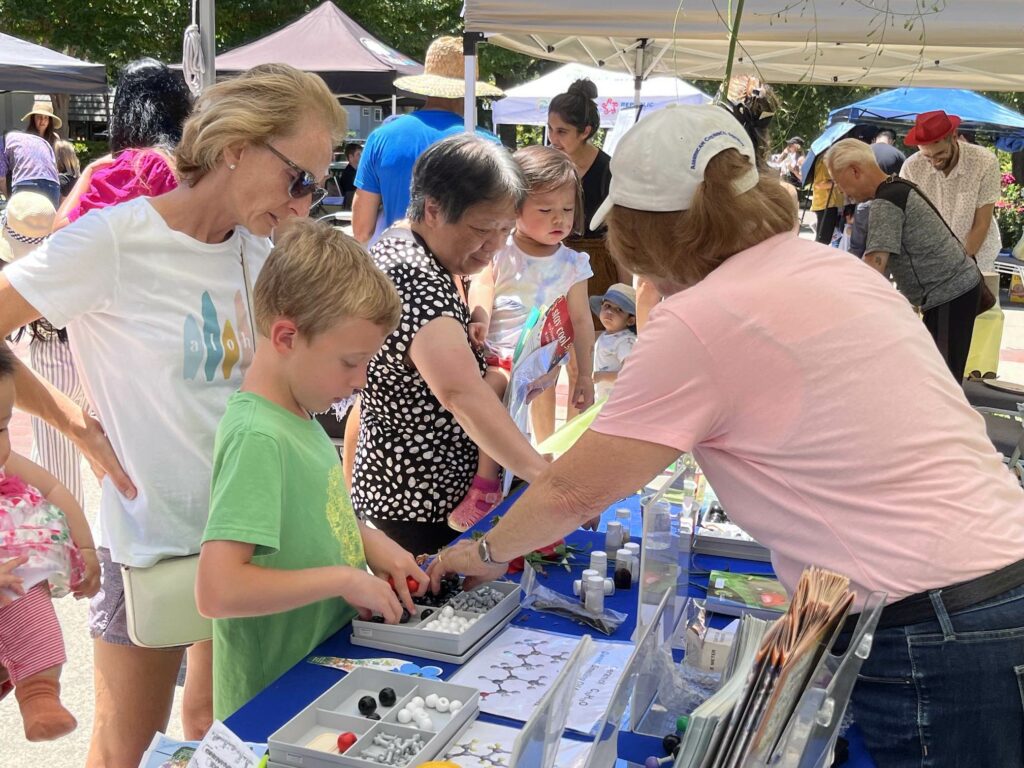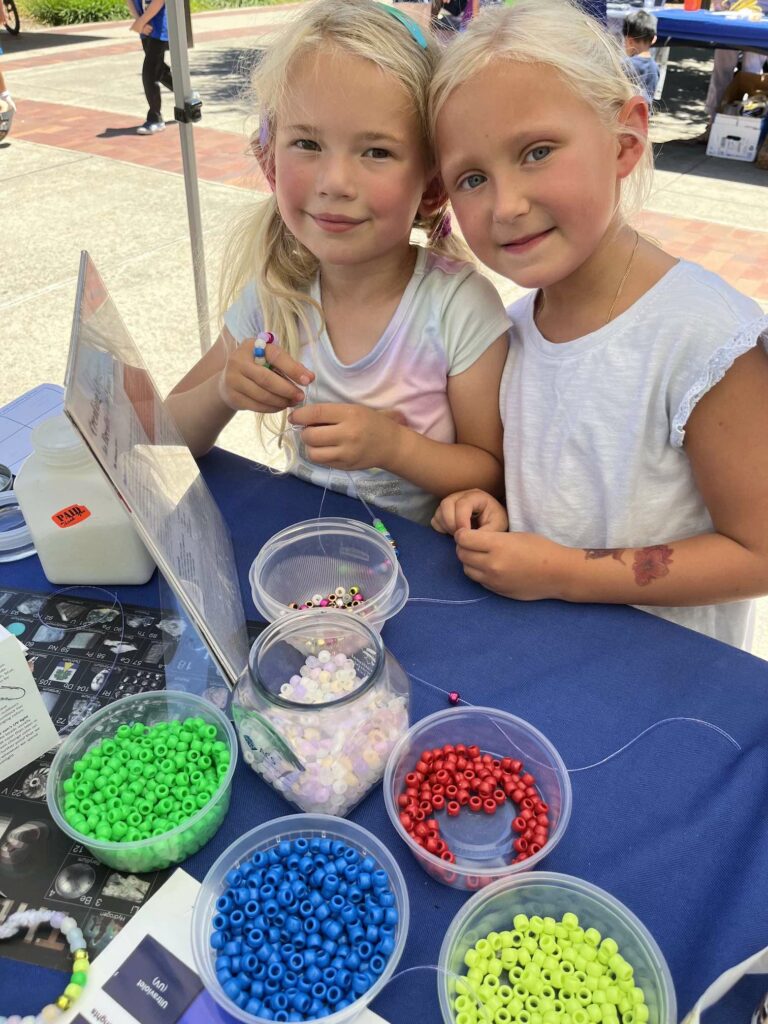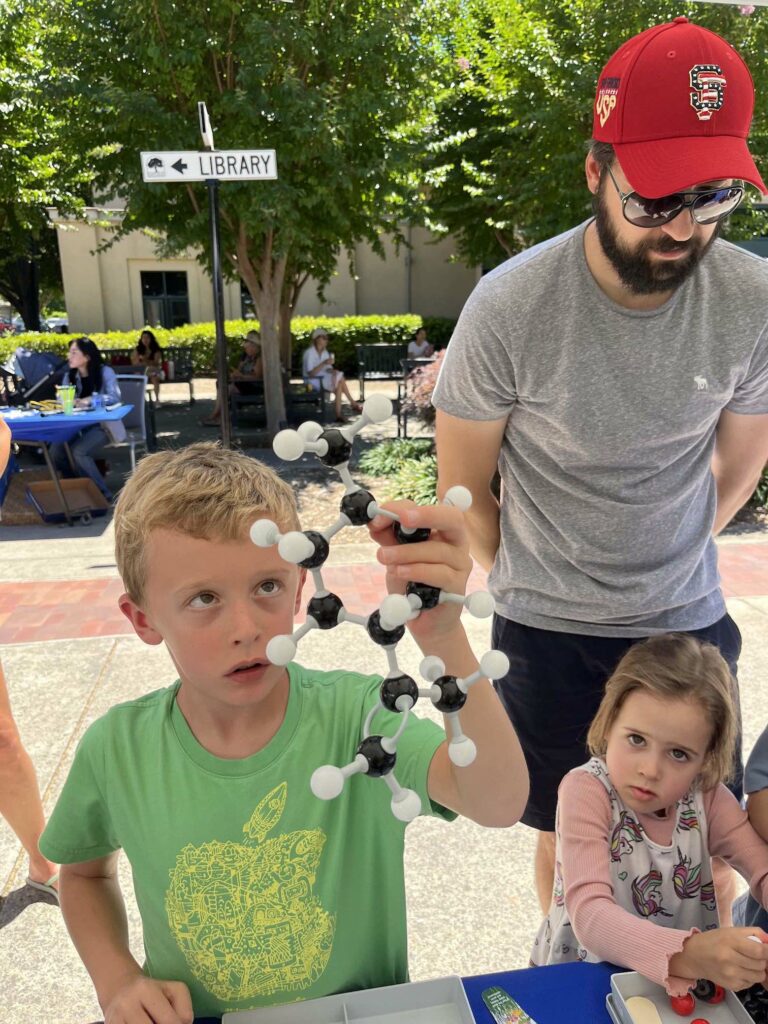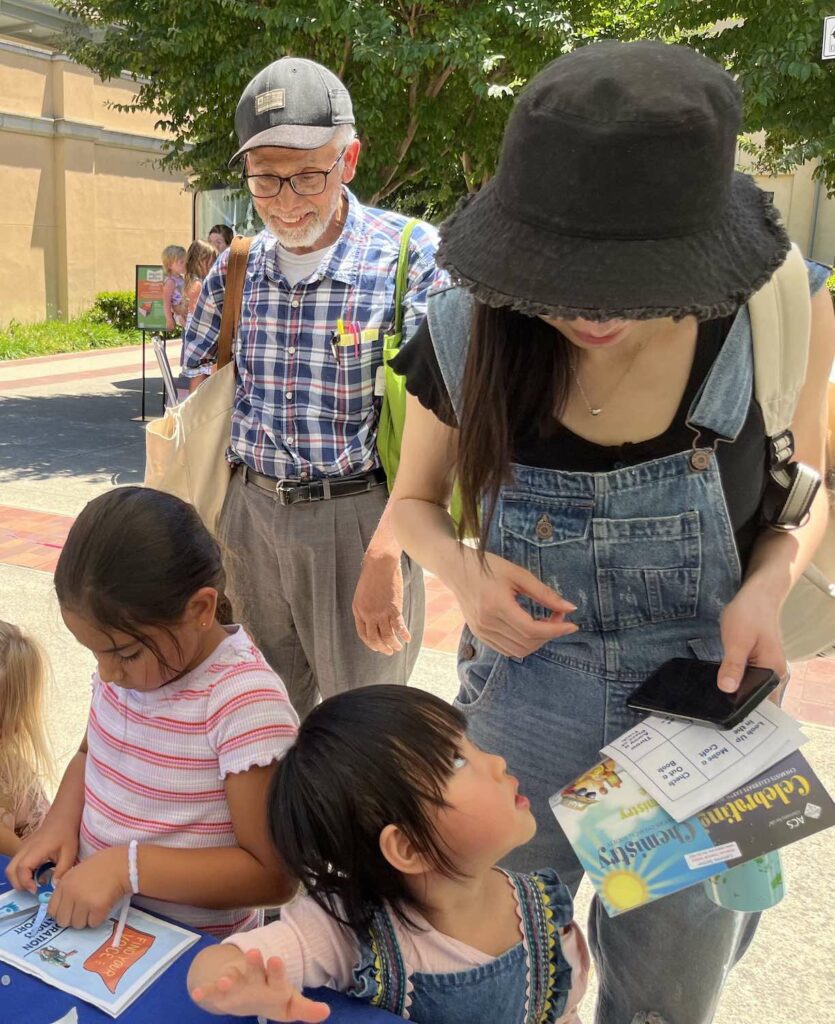Contra Costa County Library Exploration Stations
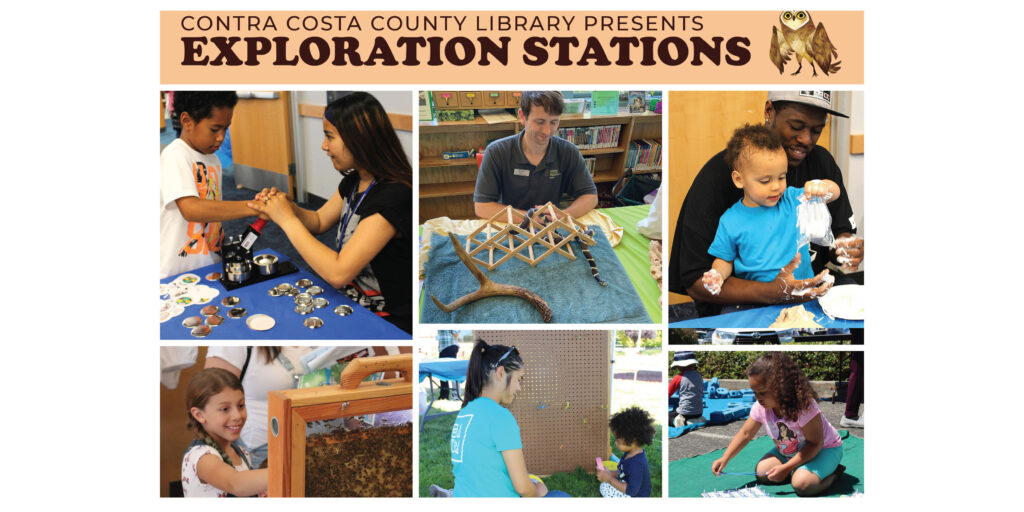
Exploration Stations 2024
Exploration Stations are back and Cal ACS was there:
- Oakley Library – Saturday June 01 | 11:00 am – 1:00 pm
- Brentwood Library – Wednesday June 12 | 11:00 am – 1:00 pm
- Pleasant Hill Library – Tuesday June 18 | 11:00 am – 1:00 pm
- El Sobrante Library – Thursday June 20 | 11:00 am – 1:00 pm
Download the Contra Costa Library Exploration Stations flier HERE.
Our booth featured plenty of hands-on chemistry: Build-a-Battery, Solar-Powered Electrolysis of Water, UV-Detecting Beads, and more. We reproduced Alessandro Volta’s original 1799 battery, watching the voltage increase as we added copper and zinc washers to the pile and then connecting various colored LEDs whose glow delighted our young scientists. There were copies of Celebrating Chemistry (Earth Week 2024 edition) with instructions for fun, safe activities to try at home, and plenty of souvenir Periodic Tables, “Proud to be a Chemist” stickers, etc. Read on — once again, Science is Fun!
Charlie Gluchowski and Elaine Yamaguchi assisted me at the Oakley Library on June 1st.
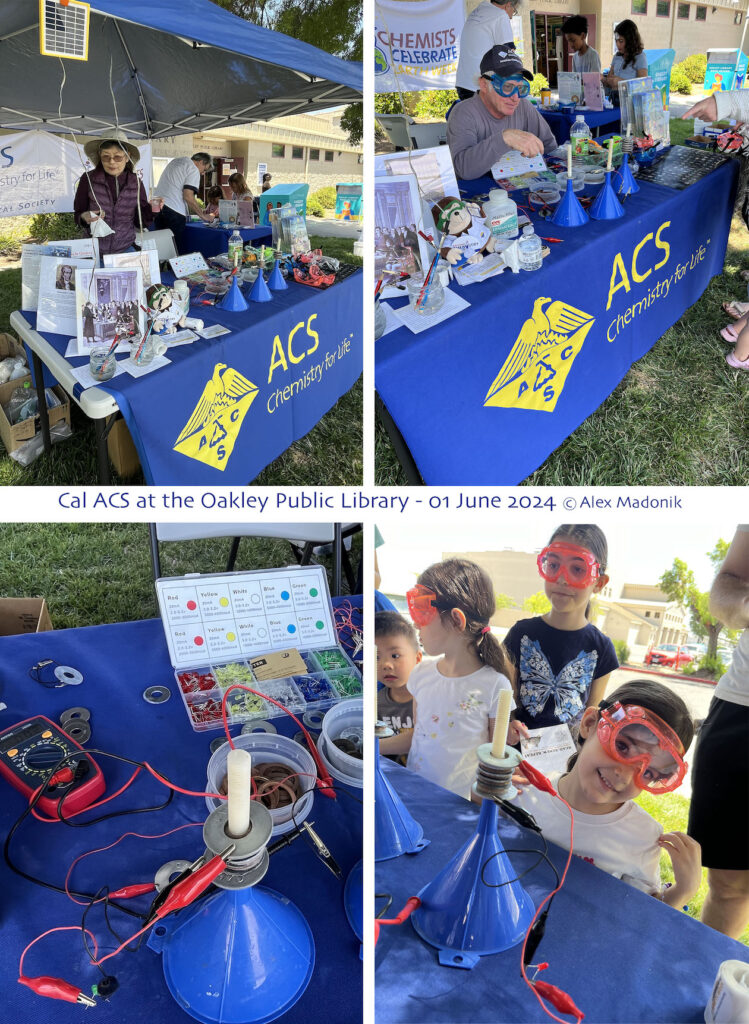
I was on my own at the Brentwood Library on June 12th, in a lovely, shaded spot with plenty of table space in a park across the street from the library. There was a big crowd, and most were ready to build a battery or make a UV-detecting bracelet while I offered encouragement. I did take a few photos.
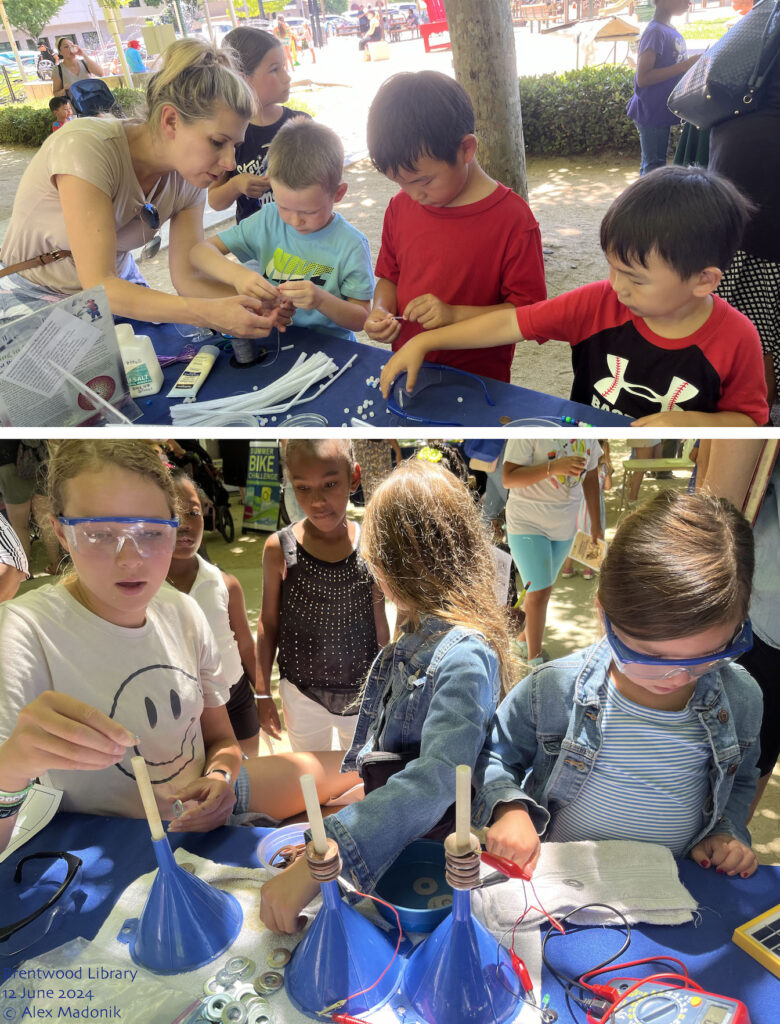
Dan Calef and Deborah Scott joined me at the Pleasant Hill Library on June 18th, another very popular event. Visitors were greeted by a giant freshwater fish tank on wheels out front, presented by the East Bay Regional Parks (Dan and I learned that the fish live at a laboratory in the Alameda when they are not on tour). We set up out back in the shady courtyard, alongside a brilliant face painter whose work is featured in many of the photos we took there. One young scientist asked us to connect two different colored LEDs to our battery, and it was time to make a prediction: if we connect them in parallel, will both LEDs light up? When we connect a blue and a red LED, ONLY the red LED lit up. We thought to check the voltage, and it was 1.7 volts. With the same battery, we could illuminate the blue LED on its own, and we measured 2.3 volts. Clearly, each colored LED has a unique band-gap, corresponding to the energy per photon required for the specific color of light produced!
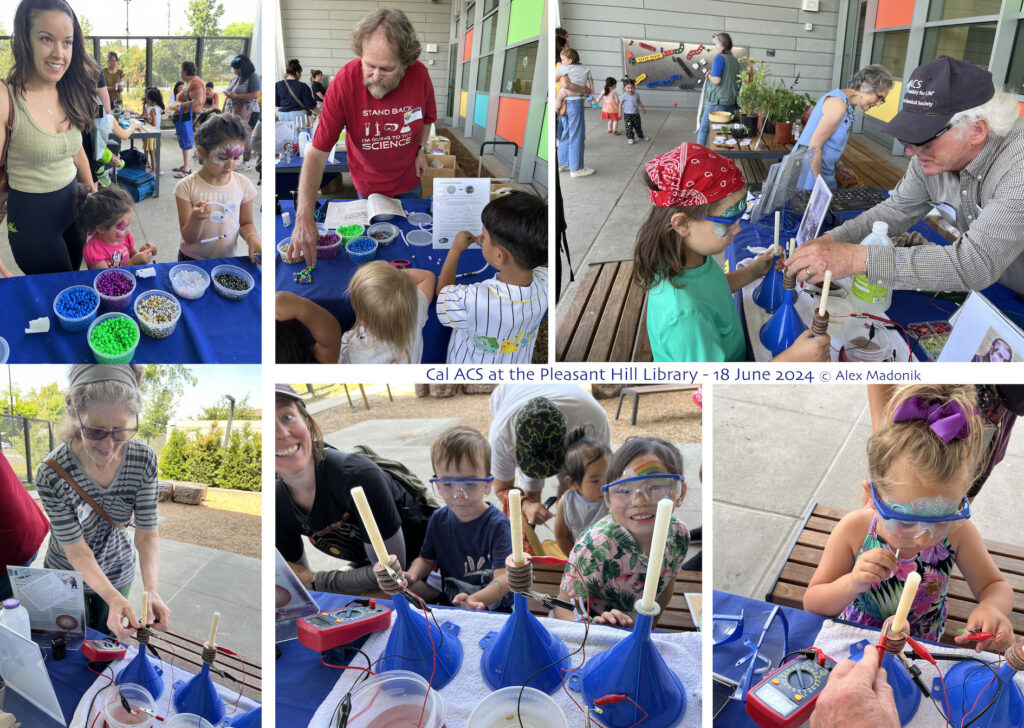
Elaine and Charlie returned for the final event at the El Sobrante Libary on June 20th, and Michael Cheng joined us as well. We had a quiet spot in a small park adjacent to the library, where a steady stream of visitors appeared to try some science. It was great fun confirming our recent observations about the specific voltages required for each type of LED. Michael supplied some oversize pencils that increased the rate of our solar-powered electrolysis.
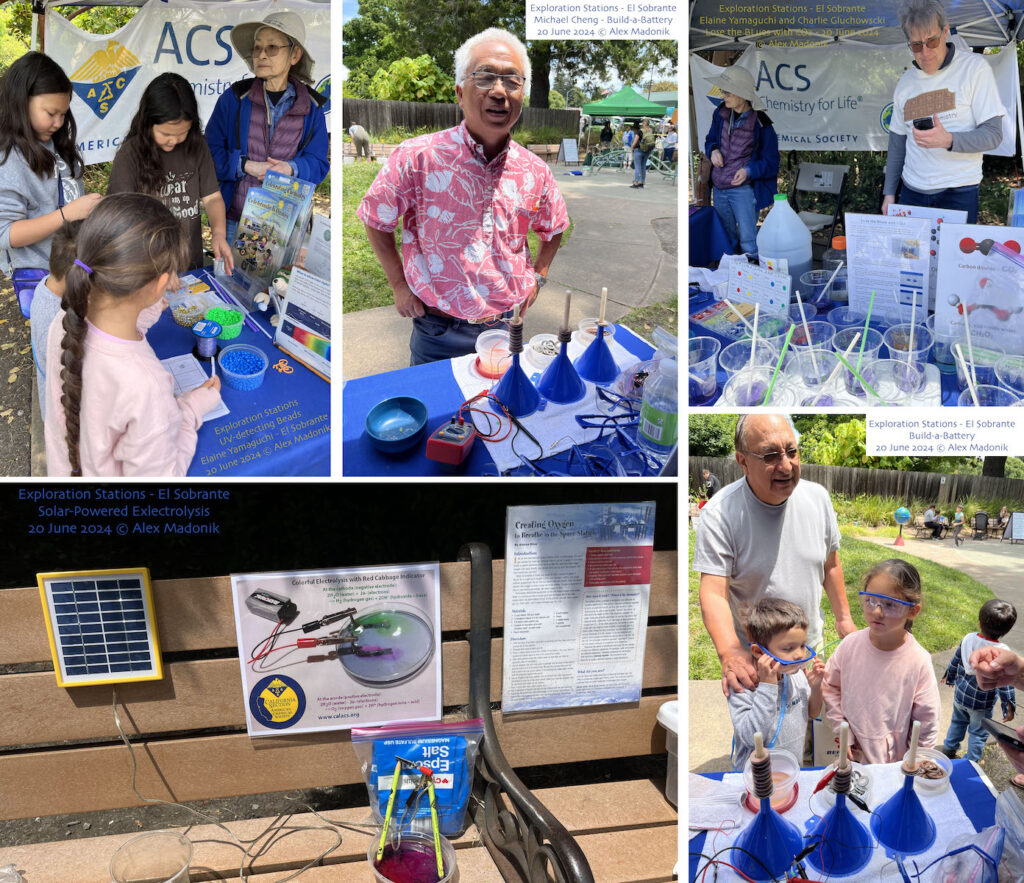
We look forward to visiting the Contra Costa libraries again next summer, and we’ll keep in touch with Amy Mockoski, overall coordinator of the Exploration Stations.

Exploration Stations 2023
In June and July 2023, the Contra Costa County Libraries invited Cal ACS to participate in four Exploration Station events across the eastern part of the county, with the theme of sustainability:
- Brentwood Library – June 14 | 11:00am – 1:00pm
- Bay Point Library – June 15 | 2:30 – 4:30pm
- Pinole Library – June 29 | 11:00am – 1:00pm
- Danville Library – July 11 | 1:00 – 3:00pm
I took on the first two events myself (a couple of other volunteers had to drop out at the last minute) and I reprised our Earth Week 2023 activities, making alginate gels and making oxygen using solar-powered electrolysis. At each site, Contra Costa County library staff graciously helped out as we welcomed dozens of families who were eager to try some hands-on science:
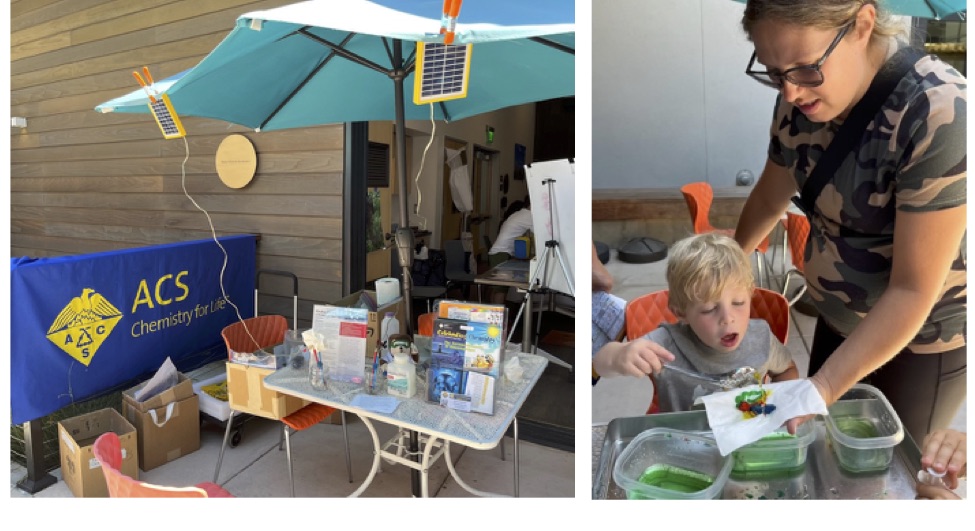
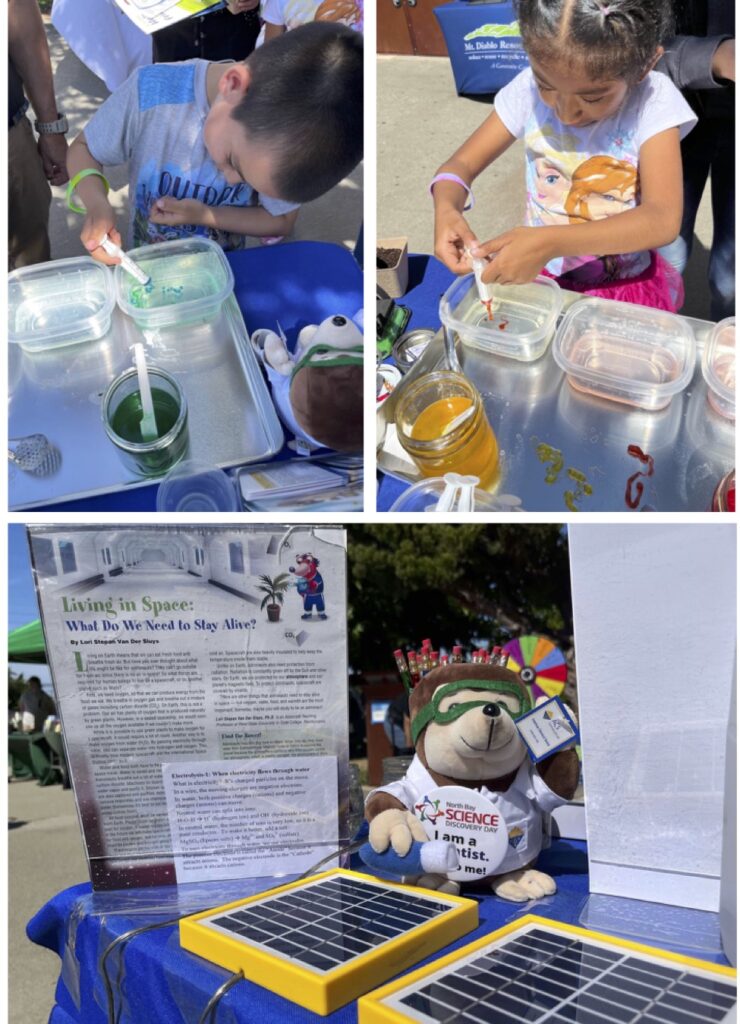
Kids were eager to collect their colorful alginate gels, which they created as worms, salamanders, and beads by adding 2% sodium alginate solution to a 10% solution of calcium lactate. Since the materials are food grade products, there was no need for protective equipment. Older friends and parents were ready to accepts copies of Celebrating Chemistry, Periodic Table wallet cards, and other souvenirs.
Michael Cheng led the team at the Pinole Public library, assisted by Vanessa Marx and Elaine Yamaguchi. As he reported, several other community organizations were present, and about 75 visitors stopped at the Cal ACS booth to make slime (with polyvinyl alcohol and borax) and create UV-detecting bracelets with color-changing beads.
Greti Séquin joined me at the Danville Public Library, and she prepared this report:
On a hot, sunny afternoon, children of all ages, together with their adult companions, visited the Cal ACS booth on the lawn in front of the Danville Library. They were invited to shake vials with small samples of plant materials in water and had fun observing the formation of bubbles in the samples containing soapy saponins. A model of a soap molecule and a complete, four foot long California soap root plant (Chlorogalum pomeridianum) decorated the exhibit.
Our guest then compared fragrant plant leaves with small samples of plant extracts in vials, trying to guess the identity of the extracts. They could then build molecules of some fragrance compounds, such as geraniol or vanillin, using our molecular model kits. While older children patiently built the models according to the illustrated structures, most younger children had fun building their own “fantasy” molecules.
UV-detecting beads were popular with children (and adults), who craft their own bracelets and observe the changes of the beads (colorless in the dark and but brilliantly colored in sunlight). They could also observe the power of sunlight, as electricity from two small solar panels split water into its chemical elements. See below for the Danville event photo gallery.
Alex Madonik, NCW Coordinator
